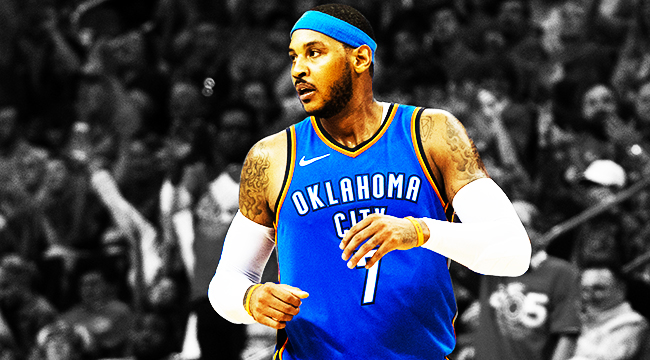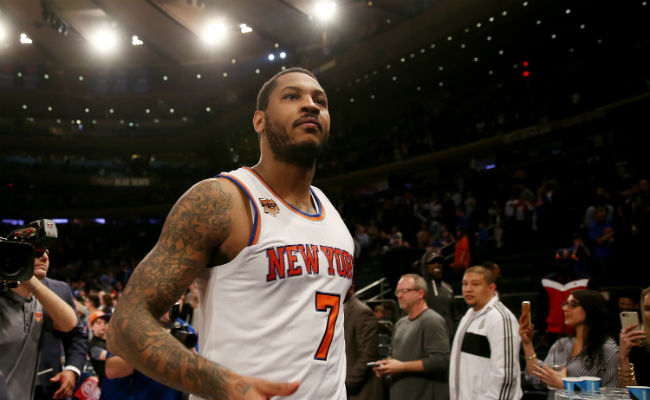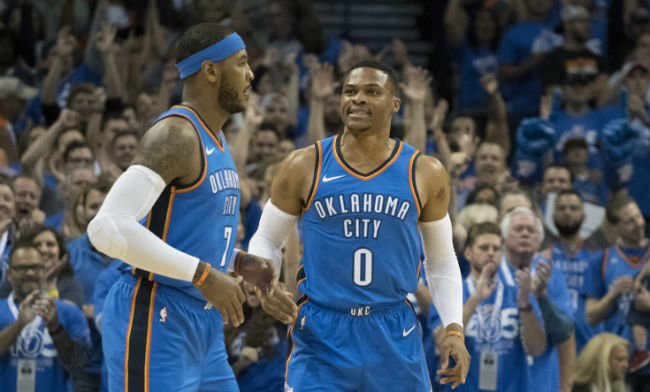
I was always going to end up a Knicks fan whether I wanted to or not. The combination of my father being a huge sports fan and the Knicks having consistent success during my formative years all but ensured that I’d wind up hooked. Patrick Ewing, Charles Oakley, Anthony Mason, and John Starks were defining figures of my early childhood, and Marcus Camby, Allan Houston, and Latrell Sprewell ably filled those same roles in my pre-teen years.
I was 15 years old before my favorite basketball team missed the playoffs for the first time in my life; at the time, I didn’t even realize it was possible for the Knicks to be legitimately not good. Little did I know, “not good” was about to become best case scenario for a long, long time. During my high school and college years, the Knicks were just barely not the worst team in the NBA. They won only 250 of 656 games from 2001 through 2009, one game better than the league-worst Hawks. They ran through seven coaches, 75 players, and a sexual harassment scandal. These were dark days, to say the least.
When the famed summer of 2010 passed and the Knicks signed not LeBron James and Chris Bosh, but Amar’e Stoudemire and Raymond Felton, I was ready and incredibly willing to settle for the Knicks just being pretty good for a while. Pretty good would be so much better than what I was used to, and that would suit me just fine. Then, they traded for Carmelo Anthony.
I’m not ashamed to admit that the Melo trade — though I, like others, thought the price was too expensive and wondered why Melo couldn’t just wait for his new contract until the offseason rolled around — got my hopes way the hell up. The Knicks were going to be good again, damn it, just like they were when I was a kid. I was sure of it.

Sure, Melo and Amar’e didn’t make a ton of sense together, given their predilection for working from the same areas of the floor and the fact that neither was a positive force on defense; but I figured when you have two stars in their respective primes, you’re going to be good. That’s the way the NBA works.
Alas, I turned out to be wrong. With the exception of one magical season that may or may not have been a fever dream, the Melo-Amar’e Era Knicks were mostly just okay, and the Melo-Phil Era Knicks were an outright disaster. On the whole, the Knicks won 221 games during Melo’s time with the team, and lost 282 of them. They were essentially the equivalent of a 36-win team. Basically, just as they’d been during my late teens and early 20’s, they were not good.
Like most Knicks fans, I had a complicated, ever-evolving relationship with Melo — the player — during this time with my favorite team. As mentioned, I had incredibly high hopes at the start of his tenure, firmly believing that his sheer talent would help power the Knicks to become a consistent winner. Even as he clashed with Amar’e and Mike D’Antoni and Jeremy Lin and Tyson Chandler, I moved into a period where I readily acknowledged his flaws, but strongly resisted the idea that he was some sort of cancer holding the team back by his mere presence.
As time wore on, his shortcomings naturally began to wear on me more and more.
Aren’t two jab steps enough for one possession? Will he just stop arguing and get back on defense already? Doesn’t he realize he’s better at the four? Why does he always shoot with five seconds remaining on end-of-quarter possessions? Is he ever going to make a go-ahead jumper late in the game again? If he’s not, can he at least go to the basket and try to get fouled? What is with that thing where he closes out on shooters with his hands down? If he’s injured and needs knee surgery, why the hell is he still suiting up and taking 20 shots a night? Is it really necessary to feud with everyone that gains even a modicum of power at the Garden?
By the end, my feelings about Melo as a player got even more complicated because my feelings regarding what I knew about him as a person. He appeared to be a good and caring father to his son (you could see that through social media or whenever his son, Kiyan, wandered into the locker room after games), and he’d grown into a citizen of the world that cared about trivial things like hats and watches — timepieces, as he so awkwardly referring to them in that staggeringly-weird ESPN feature about his business exploits — but also important social issues. And he didn’t just care about them from the sidelines; he marched in Baltimore and made a speech at the ESPYs. He spoke out about what was important to him, and I admired the hell out of that.
Because I grew to be so fond of him off the court, I found myself less inclined to care about some of his faults on it, even as they nagged at me.

Then he was traded to the Thunder. And folks, I’ve got to say, watching Melo when he’s not on your favorite team anymore is AMAZING. It’s so much fun. I’m now free to enjoy something that gave me so much angst over the last few years because the fan part of me that shouldn’t exist anymore due to covering the league for seven-plus years (but still does anyway because I’m a weak person) doesn’t really care about how it impacts the team on a larger scale. That team isn’t my favorite team, so I’m free to let Melo be Melo.
I don’t care how many times Melo jab-steps. I don’t care if he gets back on defense. I don’t care about his shot clock management. I don’t care that he settles for jumpers when he draws a slower defender. I don’t care if he closes out at all, let alone whether he does it with his hand straight up in the air like you’re supposed to. I don’t care if he takes more shots than Russell Westbrook or Paul George, even though they’re both better than him. I just care that, for a few minutes a night, he cooks the guy in front of him.
I’ve watched three of the Thunder’s early-season games, and it’s been more and more fun for me each successive time. He was clearly still getting into the rhythm of things in the season-opener against — who else? — the Knicks, but against the Jazz and then the Wolves, there were a couple times where he just freaking went to work, and I found myself silently pumping my fist like when they cut to the guy in the crowd in movies. Trailer threes, pump-and-drives, those jab-step, one-dribble fade-aways that seem to go through the net at 100 miles an hour when he really has it going. The late go-ahead jumper against Minnesota on a beautifully-designed play that for once was not a mid-post isolation.
It couldn’t have mattered less to me that OKC lost both of those games, that Taj Gibson couldn’t possibly have scored on him more easily on a couple post-ups, or that he didn’t even bother to pretend he was interested in rebounding against the Jazz. Nope. All I cared about was just watching the guy do that one thing he’s always known how to do. Unburdened by having him on my favorite team, now I can once again watch Carmelo Anthony in peace.






